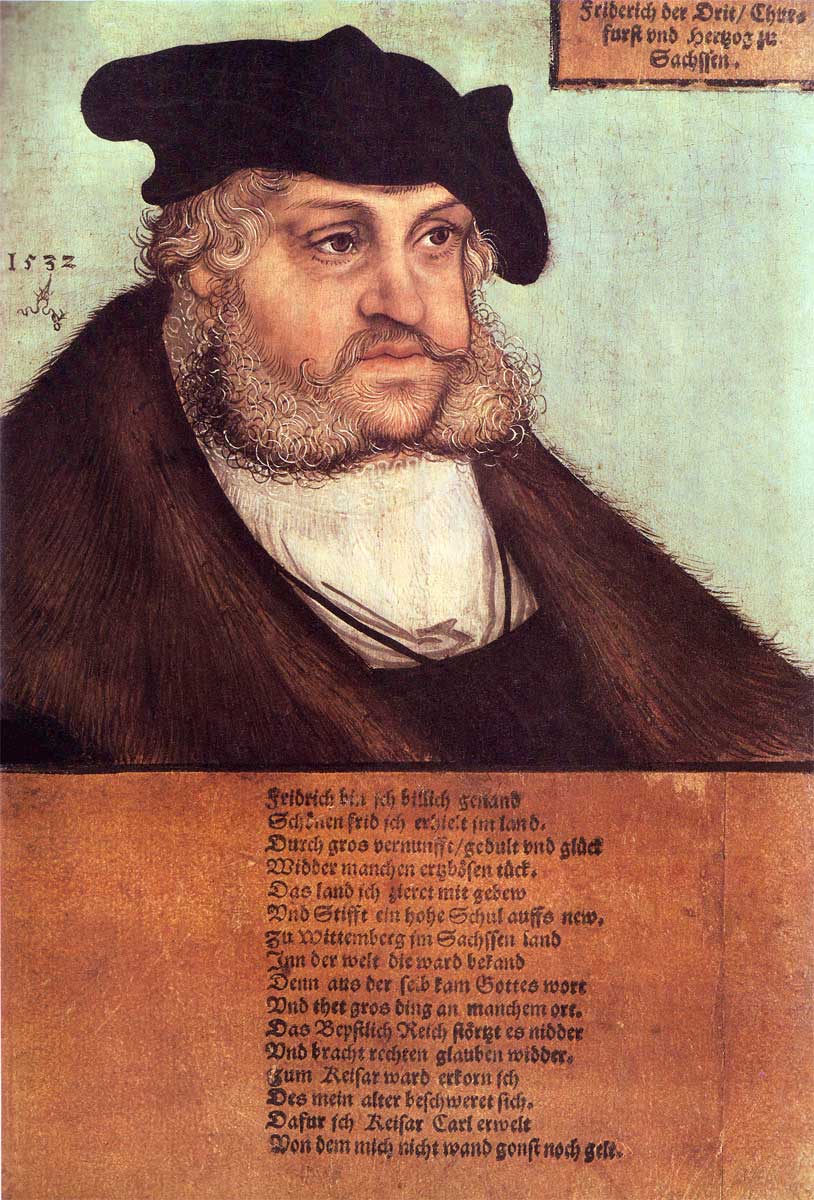Abstract
Saxon elector Frederick III (“the Wise”) (1463-1525) provided
critical support to Martin Luther. Although Frederick was a devout
Catholic, he protected Luther after the Diet of Worms (1521) by having
him “abducted” and kept in hiding at the Wartburg. Frederick’s motives
for supporting the Protestant reformer were largely political, for his
efforts aimed to curtail the power of the increasingly mercenary Papal
States. In 1505, Frederick engaged Lucas Cranach the Elder (1472-1553)
as his court painter in Wittenberg. Cranach painted this portrait of
Frederick III in 1532.
The inscription contains a reference to his
strategically wise behavior during the election of a new emperor in
1519. It reads: "Frederick I am called reasonably. I maintained
peace in the land. Through great reason, patience and and luck, I
resisted many an evil plot. I adorned the land with buildings and
established a great new university. At Wittemberg in Saxony, it became
known throughout the world. For from there came the word of God and
achieved great things in many places. It overthrew the papal empire. And
restored true faith. I was chosen to become emperor, but my age forbade
it. I elected Emperor Charles, from whom I expected neither favor nor
reward."
